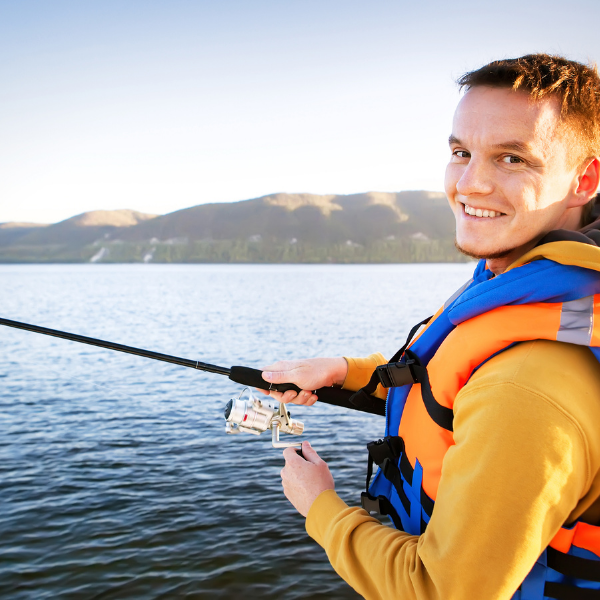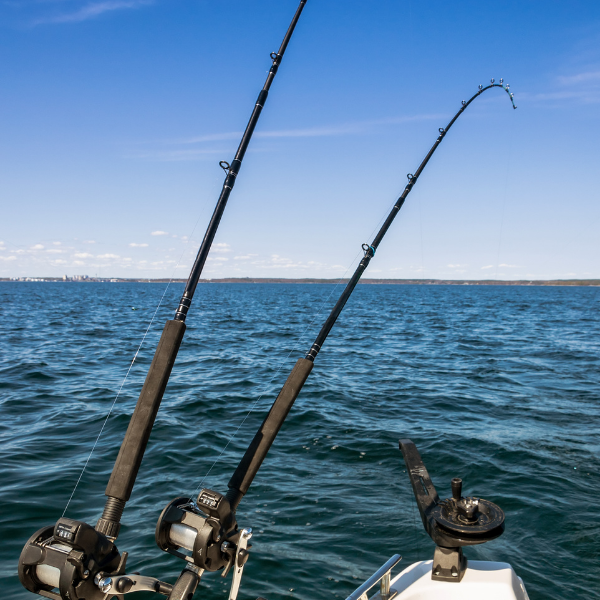HOW TO CHOOSE THE RIGHT FISHING LINE
Depending on the style of fishing you want to do and the species you are targeting, you need different types of fishing line. In this article, we’ll look at the most used lines and what they are used for, so you can pick the right one each time you go fishing.
MONOFILAMENT LINE
This is the most versatile fishing line and it comes in a variety of shades. Blue and clear are the most bought colours, because they are hard to see underwater.
Mono is economical, abrasion-resistant, and stretchy, which means it’s great for running shallow-diving crankbaits through rock or wood. If the crankbait gets stuck, the extra stretch helps the lure get untangled quickly.
Monofilament floats well, so you can use it with suspending stickbaits to keep them in the hang zone for long periods of time.
Bear in mind that mono isn’t as strong as other lines and has roughly a one-year lifespan, as it deteriorates in the sun. It’s also worth knowing that it’s susceptible to “line memory”, which means it often “remembers” the reel on which it’s stored. This can make casting a little difficult.
Use monofilament to catch small tuna, flathead, snapper, kingfish, trout, salmon, and more.
BRAIDED LINE
Braided fishing lines are stronger and more durable than mono. They have no stretch, so you can feel every movement the fish make on the other end of the line and you have more control over how your lure moves underwater. Compared to monofilament, it sinks faster, is less abrasion-resistant, and it can cast farther.
Braided line is expensive and quite slippery, which means it can take a while to master knots with it. Having no “line memory”, you can use it on spinning reels.
Use braided line to target deep-water species, such as large tuna, marlin, and kingfisher. Avoid using it for soft-mouthed fish or when trolling.
FLUOROCARBON LINE
Fluorocarbon fishing line is single-strand, like monofilament. However, the molecules that make it up are closer together, so the line is denser and heavier, compared to mono. It’s less stretchy, but invisible to fish and abrasion-resistant. Fluorocarbon sinks quickly and is very sensitive, so you can feel every little bite. However, it’s prone to “line memory” and stiff, so you need to moisten it before tying knots.
Fluorocarbon line is often used as leader, which means a short length of it is attached to the end of the lighter main line (often braided) to increase the chances of a catch and to reduce line fray from the fish’s teeth.
Use fluorocarbon line for brass fishing, bottom fishing (like jigging and bottom bouncing), and trolling
WIRE FISHING LINE
When fishing for toothy fish, like mackerel and tuna, anglers often attach a length of wire to the end of their main line. You can buy wire single strand or braided. If you’re using it to reach a deeper bottom, pick up a hardened spool for the reel.
There is a type of fishing line for every situation. Match your line to the right lures (or bait) to attract the fish you’re hoping to catch.
In order not to waste a good trip, don’t leave the dock (or house) with just the one fishing line you intend to use. Maybe your target species isn’t biting today, or the underwater visibility is especially good. Take a second option with you, so you can keep fishing.


